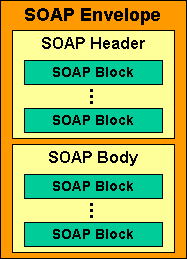Leading Web Services To Their Full Potential
Hugo Haas <[email protected]>
W3C Web Services Activity
Lead
Presentation at the IDG
Web Services Conference, Tokyo, Japan, 11 July 2002
Slides
available at:
http://www.w3.org/2002/Talks/0711-hh-idgwsc/
Overview
- History
- Goals
- Challenges
- Standardization work at W3C
History
- World Wide Web originally designed for people to share
information
- Since early days: people have been using HTML forms as
interfaces to access programs (CGI programs)
- More recently: machine to machine interaction
Web service:
- Application
- For use by another application
- Accessed via the Web (XML)
- Travel agent service sells vacation packages
- Uses other Web services: credit card WS, hotel WS, airline
WS
Example (continued): advantages
- Low cost for new airlines, hotels, credit card companies to
sell products
- Travel agent service has access to more options
- Customers get better deals
Challenges faced
A whole set of technologies to design:
- communication protocol
- description of services
- enable security and privacy
- describe complex interactions
- ...
Integration to the World Wide Web
The Web has architectural principles
Set of resources that are:
- identified (URI)
- retrieved using certain rules (e.g. HTTP GET)
- structured (e.g. XML)
Design of Web services technologies must be done in a
Web-friendly way
The need for semantics
Web services characteristics:
- Machine to machine interaction
- Dynamic agreements
- No a priori knowledge
How to make decisions and understand information expressed in
arbitrary vocabularies?
Need to understand particular XML vocabularies:
- Make sense of the information
- Merge information
Ontologies
- Ontologies: formal description of concepts and their
relationships
Examples:
- Definition of "plane ticket" and "non-refundable plane
ticket"
- A "non-refundable plane ticket" is a kind of "plane
ticket"
- Communication of concepts
The Semantic Web
- Vision: having a machine-processable Web
- Simple machine processable way of expressing information:
- Unambiguous definitions: use of URIs
- Allow to find, share and combine information more easily
Standardization work
Web Services Activity
- Created in January 2002
- Subsumes the XML Protocol Activity started in September
2000
- Large Activity: more than 65 Member organizations
- All the work is done in public: mailing list archive, meeting
records, editors' copies
- Technologies developed under Royalty-Free terms
- Organization:
3 Working Groups:
1 Coordination
Group
Web Services Architecture
- Work started in January 2002
- Developed by the Web
Services Architecture Working Group
- 76 participants representing 52 Member organizations
- Goal: define the Web services architecture
- What are we trying to achieve?
- What technology is needed?
- Define the scope of each technology and its relationship with
others
- Output used to scope proposals for new Working Groups
Requirements of the Web services architecture
- Enable interoperability
- Reliable:
- Well defined
- Set of metrics, e.g. for measuring quality of service
- Clean integration in the Web
- Security and privacy
- Scalability and extensibility:
- Modular
- Extensible, open-ended
Status of the Web Services Architecture Working Group
Documents
listed on the Working Group's page:
- Requirements for the Web services architecture: Working
Draft
- Usage scenario document: editors' copy
- Architecture document: editors' copy
- Glossary: editors' copy
Communicating between machines
- Need for a messaging protocol allowing complex machine to
machine interactions
- Information of complex type
- Extensibility is key; support for:
- Security extensions
- Reliability extensions
- Caching extensions
- Etc.
An XML-based protocol: SOAP version 1.2
- Work started in September 2000
- Result of growing interest in the use of XML in distributed
applications communication
- XML Protocol Working
Group: 62 participants representing 34 Member
organizations
- Technical solutions proposed by the SOAP/1.1 submission
evaluated
SOAP version 1.2 in a nutshell
- SOAP message:
- Envelope
- Composed of a header and a body

- Processing model
- Sent from a sender to a receiver, possibly via
intermediaries
- Headers:
- Can be addressed to certain intermediaries
- Can be marked as mandatory
- Can be transfered from one node to another any underlying
protocol (e.g. HTTP)
Status of the work on SOAP version 1.2
Started from SOAP/1.1; more than 200 issues found and then
solved
Documents
produced:
- SOAP version 1.2, Part 1: Messaging Framework: Last Call
Working Draft
- Processing Model
- Envelope
- Protocol Binding Framework
- SOAP version 1.2, Part 2: Adjuncts: Last Call Working Draft
- Data Model
- Encoding
- RPC Convention
- Binding and Feature Description Convention
- Message Exchange Pattern (MEP)
- HTTP Binding
Status of the work on SOAP version 1.2 (continued)
Documents produced (continued):
- XML Protocol (XMLP) Requirements Document: Working Draft
- XML Protocol Usage Scenarios: Working Draft
- XML Protocol Abstract Model: Working Draft
- SOAP version 1.2, Part 0: Primer: Last Call Working Draft
- SOAP Version 1.2 Specification Assertions and Test Collection:
Last Call Working Draft
- SOAP Version 1.2 Email Binding: Note
A language to describe Web services: motivations
Problem: I want to use your Web Service
- Where can I find it?
- What messages are accepted / generated? What syntax?
- How should they be transmitted?
Need standard format for describing Web Services
Status of the Web Services Description Working Group
- Requirements document published:
- Based on the XML Information Set
- Use W3C XML Schema but allow other schema languages
- Simple interaction between Web Services: one-way,
request-response, solicit-response, and faults
- Binding to SOAP 1.2 and HTTP/1.1
- Extensibility and versioning
- Published a set of usage scenarios
- Just published a first Working Draft of the description
language:
- Web Services Description Language (WSDL) Version 1.2
- Web Services Description Language (WSDL) Version 1.2:
Bindings
Next steps
- Architecture:
- continue architecture definition
- propose new work
- SOAP version 1.2 to Recommendation
- Description work: address issues found against WSDL 1.1, design
binding to SOAP Version 1.2, develop an RDF mapping
References
This
presentation: http://www.w3.org/2002/Talks/0711-hh-idgwsc/
linked from http://www.w3.org/Talks/
W3C Web Services
Activity: http://www.w3.org/2002/ws/

